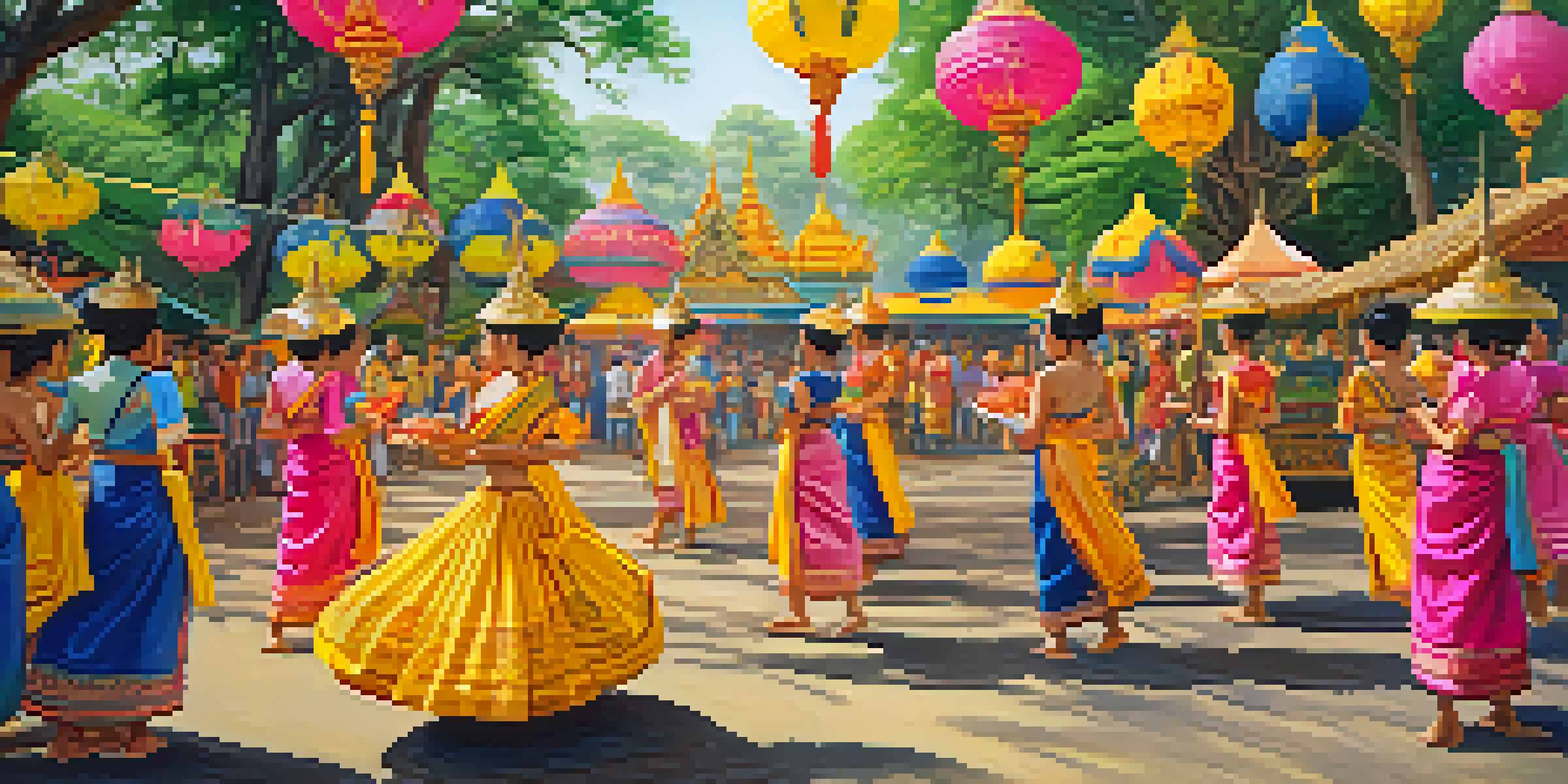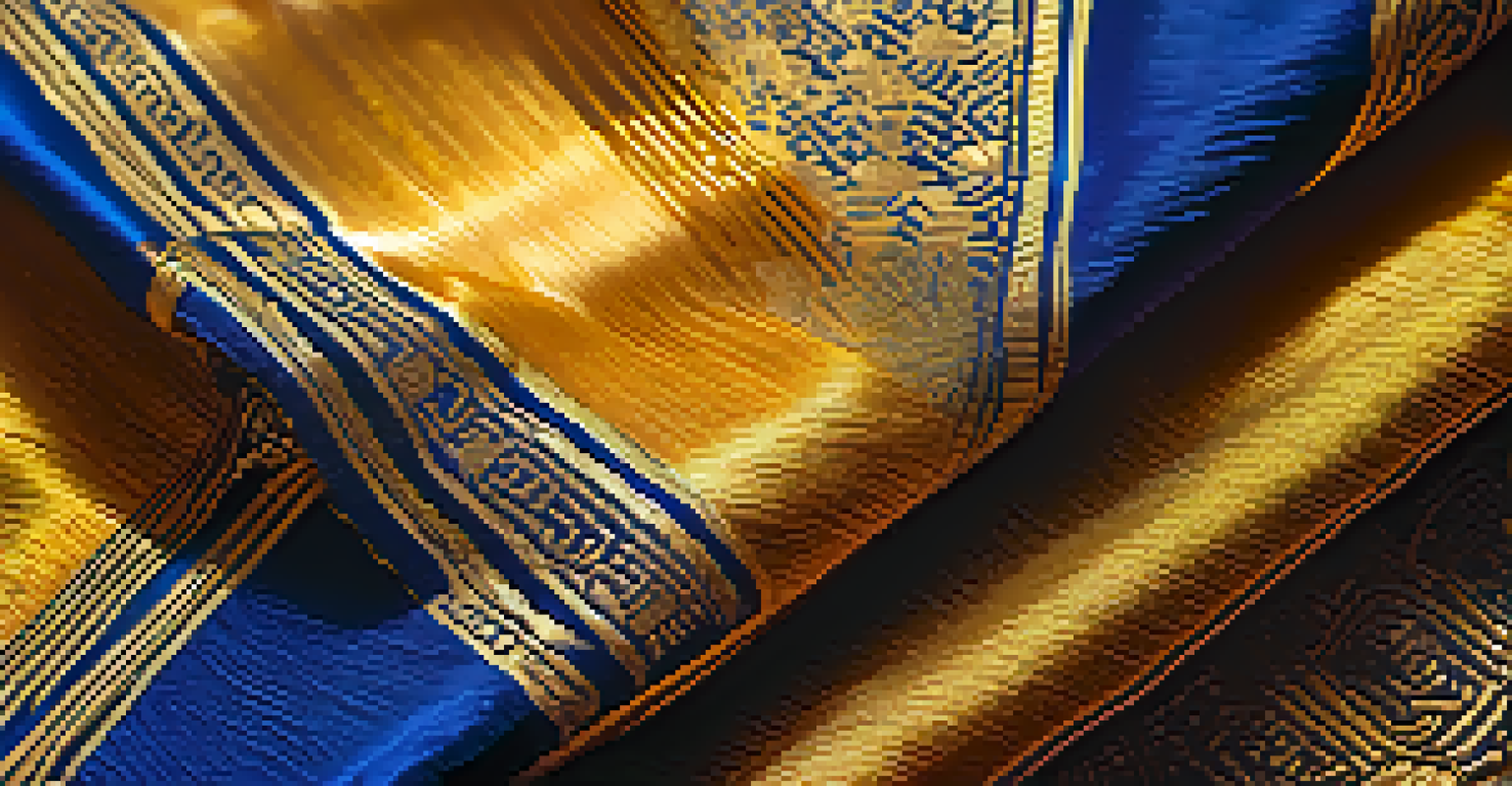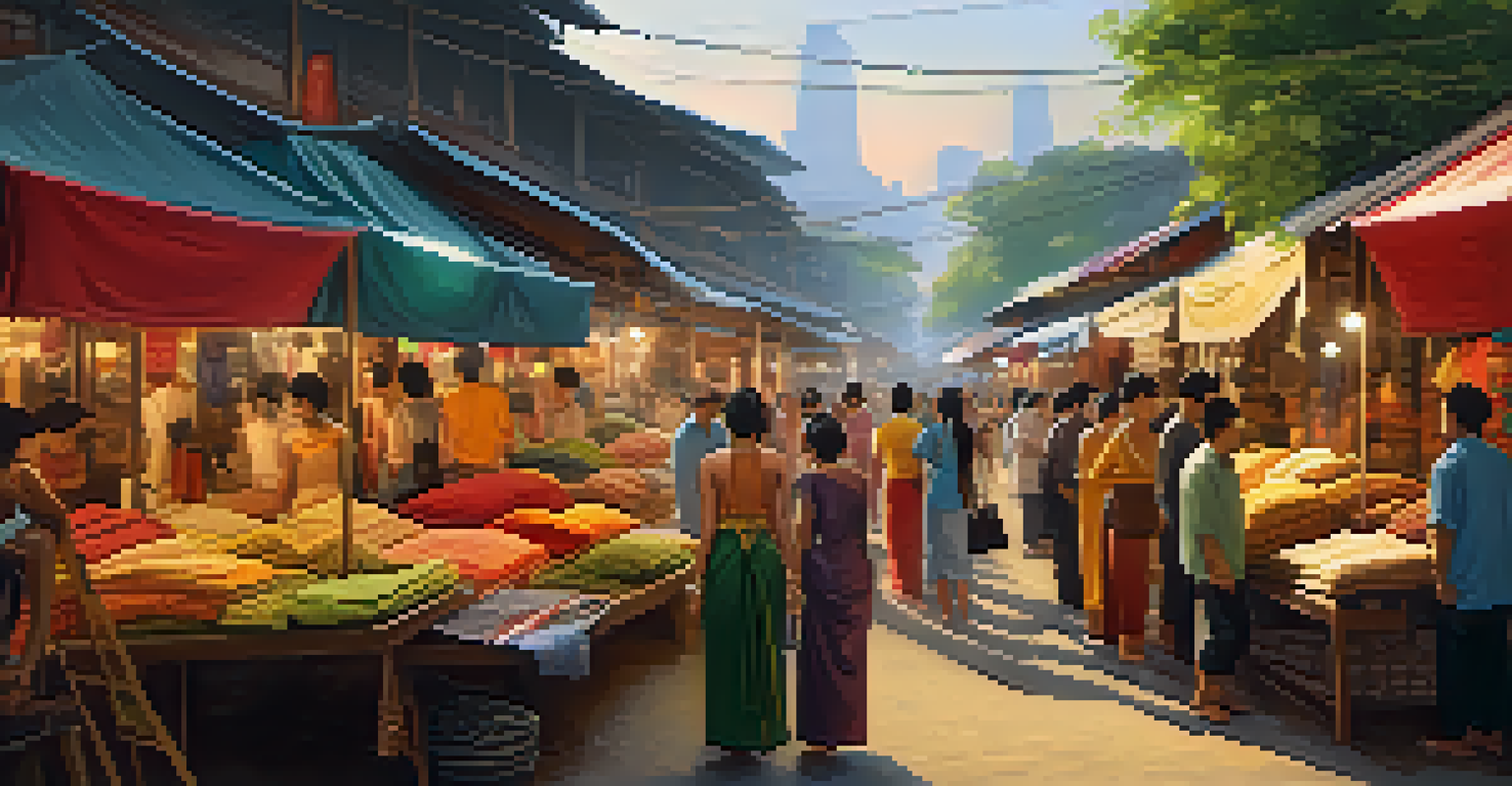Thai Clothing: A Reflection of Thai Values and Beliefs

The Cultural Significance of Thai Traditional Clothing
Thai traditional clothing is more than just fabric; it embodies the heart of Thai culture. Each garment tells a story, reflecting the history, beliefs, and values of the Thai people. It's common to see traditional outfits worn during festivals, ceremonies, and special occasions, showcasing a deep respect for heritage.
Clothing is a form of self-expression, and it can also be a reflection of our culture and heritage.
For instance, the 'Chut Thai' is a national dress that varies in style for men and women but symbolizes unity and national pride. The intricate designs and vibrant colors often highlight local craftsmanship, reminding wearers of their roots. This cultural significance fosters a sense of belonging among Thais, connecting generations.
Moreover, clothing choices are often guided by the seasons and occasions, showcasing adaptability and reverence for nature. By donning these outfits, individuals not only celebrate their identity but also acknowledge the values embedded in their society, such as respect for tradition and community.
Symbolism in Colors and Fabrics of Thai Clothing
Colors play a crucial role in Thai clothing, each hue carrying its own meaning and significance. For example, yellow is often associated with the monarchy, while pink symbolizes good fortune. These colors are not just aesthetic choices; they reflect Thai beliefs and cultural practices deeply rooted in the society.

Similarly, fabrics used in traditional garments are selected carefully, with silk being a popular choice due to its luxurious feel and association with nobility. Thai silk, known for its unique texture and sheen, is often handwoven, showcasing the skill and artistry of local artisans. This choice of fabric highlights the value placed on craftsmanship and quality in Thai culture.
Cultural Heritage in Thai Clothing
Thai traditional clothing reflects the country's rich culture, history, and values, fostering a sense of belonging among its people.
By understanding the symbolism behind colors and fabrics, one can appreciate how Thai clothing serves as a canvas for expressing identity and beliefs. Each piece worn is a silent yet powerful message about the wearer’s heritage, aspirations, and respect for cultural traditions.
The Role of Thai Clothing in Religious Practices
Religion plays a significant role in Thai culture, and clothing often reflects this spiritual dimension. Traditional attire is frequently worn during religious ceremonies, where specific garments are believed to invoke blessings or signify respect for the sacred. For instance, many Thais wear white clothing during funerals as a symbol of purity and mourning.
Fashion is about dressing according to what’s fashionable. Style is more about being yourself.
Furthermore, the use of specific colors and styles can vary depending on the occasion and the religious significance attached to it. During Buddhist ceremonies, monks and laypeople alike wear distinct robes that signify their role within the community. These garments serve as a visual reminder of their spiritual commitment and adherence to Buddhist teachings.
Ultimately, clothing in these contexts goes beyond mere appearance; it becomes a means of connecting with the divine and expressing devotion. This intertwining of clothing and spirituality illustrates the profound respect Thai culture holds for its religious beliefs and practices.
Modern Influences on Thai Clothing Styles
As Thailand has embraced modernization, its clothing styles have also evolved, blending traditional elements with contemporary fashion. Young Thais often mix traditional attire with modern trends, creating a unique fusion that speaks to their identity as both modern citizens and cultural custodians. This evolution signifies adaptability and the ongoing relevance of traditional clothing in daily life.
For example, the traditional 'Chut Thai' has been reimagined in various forms, including casual wear that retains its cultural essence while appealing to younger generations. Fashion designers in Thailand are increasingly incorporating traditional fabrics and motifs into their collections, making Thai clothing accessible and fashionable.
Symbolism of Colors and Fabrics
Colors and fabrics in Thai attire carry deep meanings and cultural significance, representing beliefs and craftsmanship.
This dynamic interplay between tradition and modernity reflects the values of innovation and creativity inherent in Thai culture. It underscores the belief that while the past is to be respected, embracing the present is equally important in shaping a vibrant cultural identity.
Regional Variations in Thai Clothing
Thailand's diverse geography contributes to a rich tapestry of regional clothing styles. Each region boasts unique garments influenced by local culture, climate, and resources. For example, the North is known for its intricate hill tribe textiles, while the South often features lightweight fabrics suitable for the tropical climate.
These regional variations not only highlight the diversity within Thailand but also reflect the values of each community. Some areas prioritize intricate craftsmanship and traditional techniques, while others focus on practicality and functionality due to environmental conditions. This diversity fosters a sense of pride and identity among the people.
Exploring these regional styles offers a glimpse into the lives of different communities and their values. Each garment tells a story of adaptation, creativity, and cultural heritage, showcasing how clothing serves as a reflection of local identity.
The Influence of Thai Royalty on Fashion Trends
Thai royalty has historically played a significant role in shaping fashion trends within the country. The royal family often sets standards for elegance and sophistication, influencing how traditional attire is perceived and worn. Their endorsement of certain styles can elevate a garment's status, making it a symbol of pride and aspiration among the people.
For instance, the royal family's choice of fabric and design often showcases the finest craftsmanship, encouraging local artisans to elevate their work. This not only preserves traditional methods but also fosters a sense of national pride in Thai clothing. People often aspire to replicate the elegance seen in royal attire during significant life events.
Modern Trends and Sustainability
The evolution of Thai clothing incorporates contemporary styles and sustainable practices, bridging tradition with modern values.
The impact of royalty on Thai fashion extends beyond clothing; it encompasses an entire lifestyle that values tradition and grace. This influence reinforces the belief that clothing is a reflection of one's heritage and status, while also nurturing a collective appreciation for Thai culture.
Sustainability and the Future of Thai Clothing
As global awareness of sustainability grows, Thai clothing is also evolving to reflect eco-friendly practices. Many designers are now focusing on sustainable materials and ethical production methods, ensuring that traditional craftsmanship is preserved while minimizing environmental impact. This shift aligns with the Thai value of harmony with nature.
For example, using organic cotton and natural dyes not only supports local farmers but also reduces the carbon footprint associated with clothing production. This sustainable approach resonates with a younger generation that values authenticity and environmental responsibility, ensuring that traditional clothing remains relevant in the modern world.

Looking to the future, the marriage of tradition and sustainability can create a vibrant and responsible fashion industry in Thailand. As more individuals embrace these values, Thai clothing will continue to evolve while remaining a powerful reflection of the country's rich heritage and beliefs.